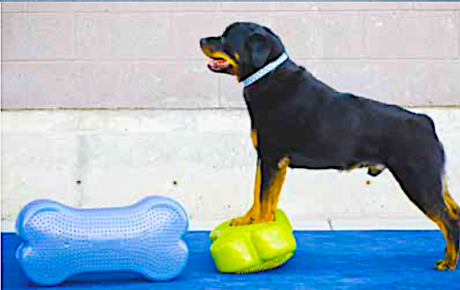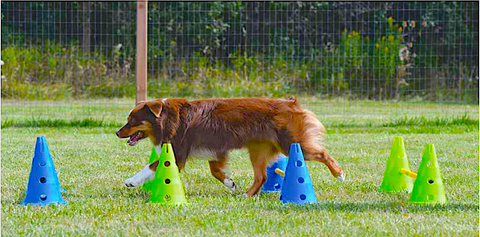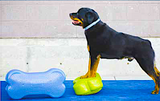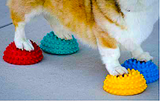

Canine conditioning has continued to gain interest and acceptance from other popular canine sports, such as flyball, agility, and obedience. Competitors are turning to canine conditioning to prevent injuries, increase their dog’s fitness level and competitiveness, and strengthen the handler-dog bond in a way that is rewarding for both parties. It might not seem as intuitive that conformation athletes can benefit from a canine conditioning program – after all, they aren’t racing down lanes to snatch a ball or slicing a tight turn across a jump. What all of these sports have in common, however, is the requirement of high-quality movement.
Our conformation athletes typically spend extended periods of time in crates, standing perfectly still (and sometimes on hard cement surfaces), and making primarily left turns. All of these factors, in addition to pre- existing individual factors (such as pain, imbalances in strength and
flexibility, and poor body awareness) can hinder our dogs from perform- ing at their best.
Canine conditioning is an emerging field that recognizes that dogs, just like people, can benefit from a specific exercise program and other therapeutic modalities that decrease pain, improve fitness, and restore functioning. Canine conditioning can help your conformation athlete by:
• Improving muscular strength and tone – Just like people, dogs become stronger and develop more visible muscle tone in response to a well laid out, progressive strength training program. Instead of us- ing external weight such as dumbbells, canine conditioning exercises improve a dog’s muscular strength by using its own body weight over a specific number of sets and reps. Without sufficient core strength, dogs can develop a saggy topline, which is not desirable in the ring.
 |
 |

|
• Body awareness – Beautiful movement is greatly enhanced when the dog is able to place its feet methodically and thoughtfully. This can be trained by using canine conditioning exercises that teach the dog how to move its individual limbs on and off of targets, as well as, us- ing unstable surfaces that require the dog to stabilize itself in multiple directions – this will also help to strengthen their core strength.
• Flexibility – When there is limited range of motion in a joint because of tight muscle groups, the dog is unable to flex or extend the way it usually does. Using a series of specific stretches to restore range of motion allows the dog to move without restriction. A great example of this is reach and drive – tight shoulders will limit a dog’s reach and tight hip muscles will limit their ability to drive from their rear.
• Physical and Mental Endurance – Long show days demand our dogs to have the physical and mental endurance to perform as well in their first go around as their last. Canine conditioning helps to improve a dog’s muscular endurance, as well as build their ability to focus and engage with us.
Not only will these contribute to bringing out the best in your dog, they will also help to reduce the likelihood of injury and sidelining them being in the ribbons.
If you’re serious about this sport, I highly recommend you add canine conditioning to your list of winning strategies.


